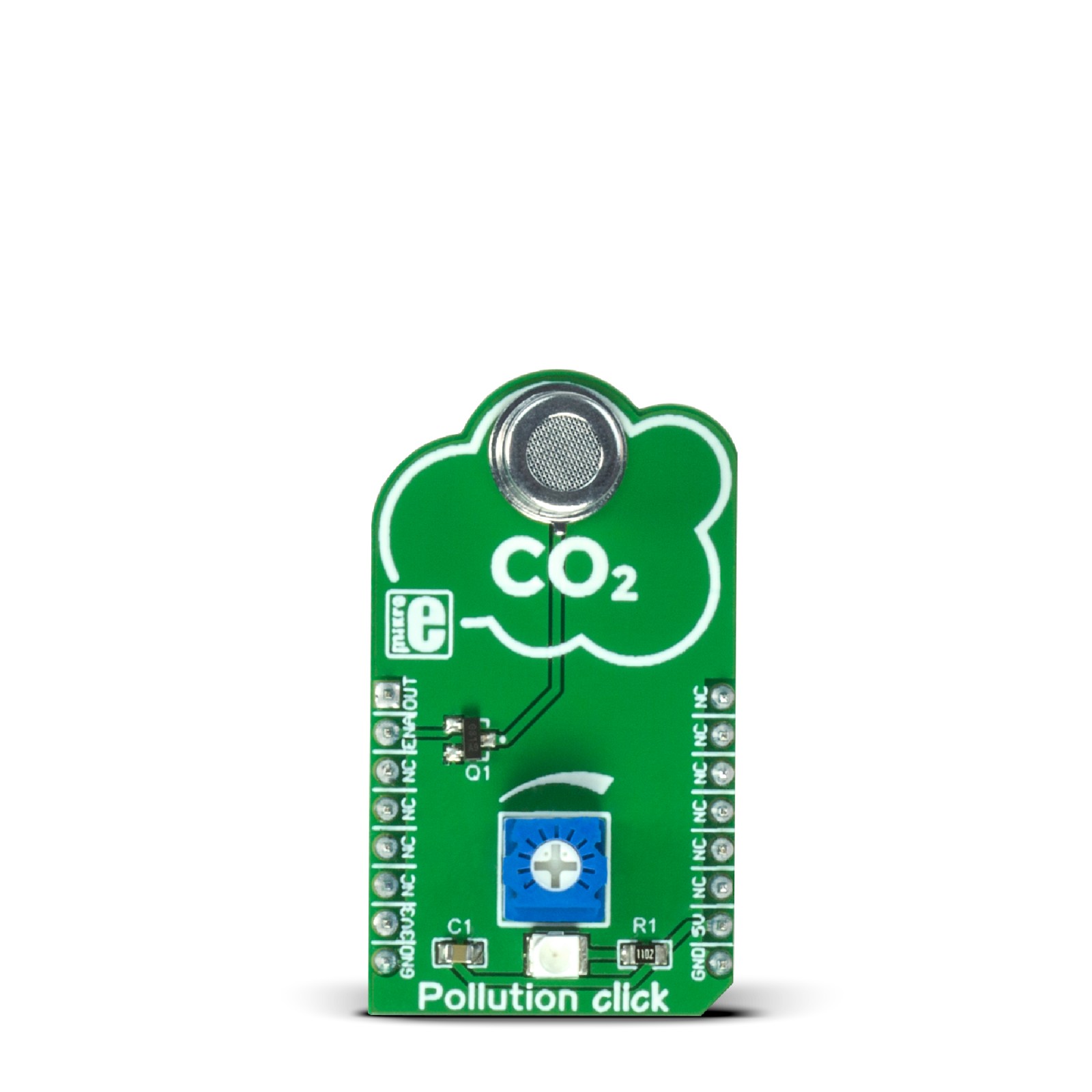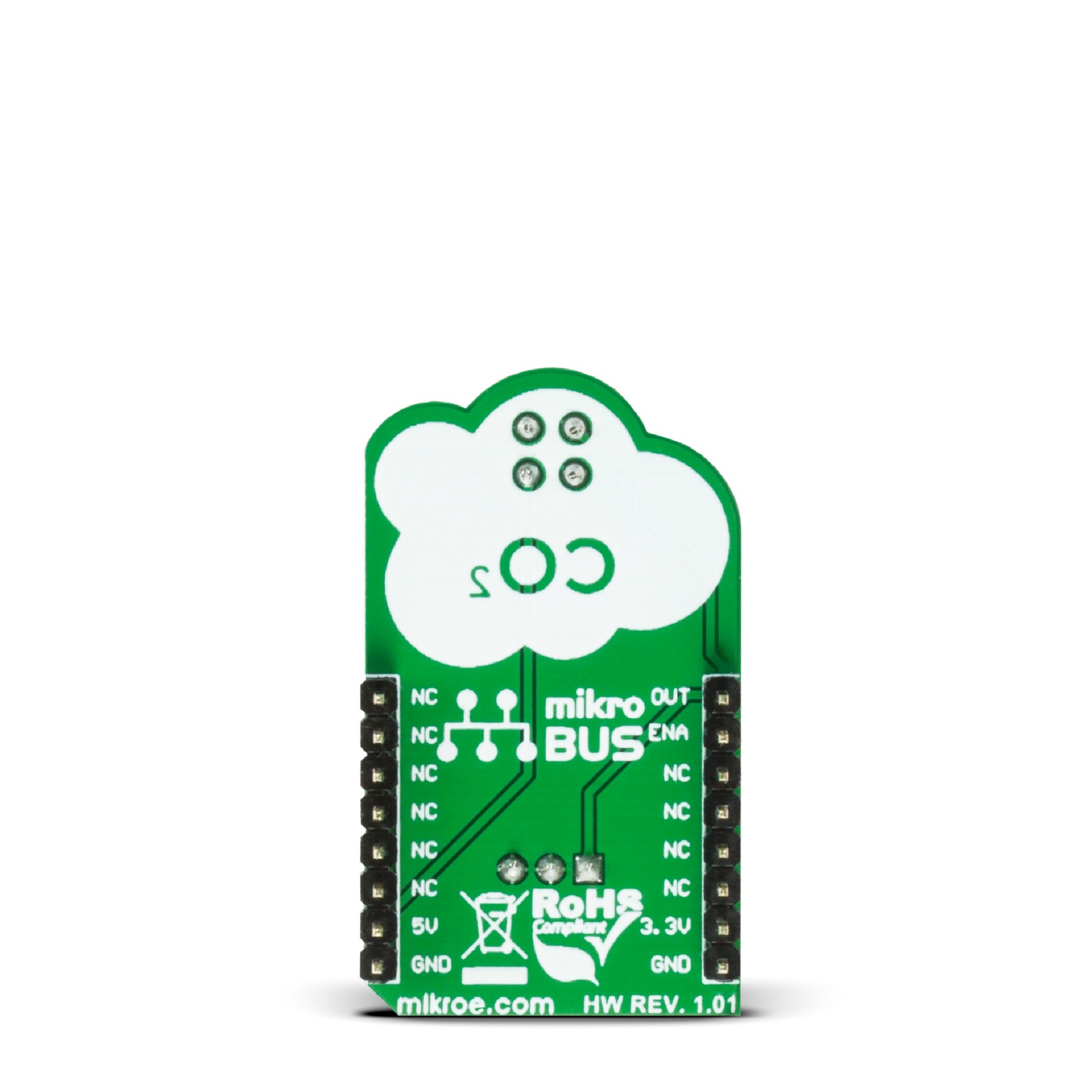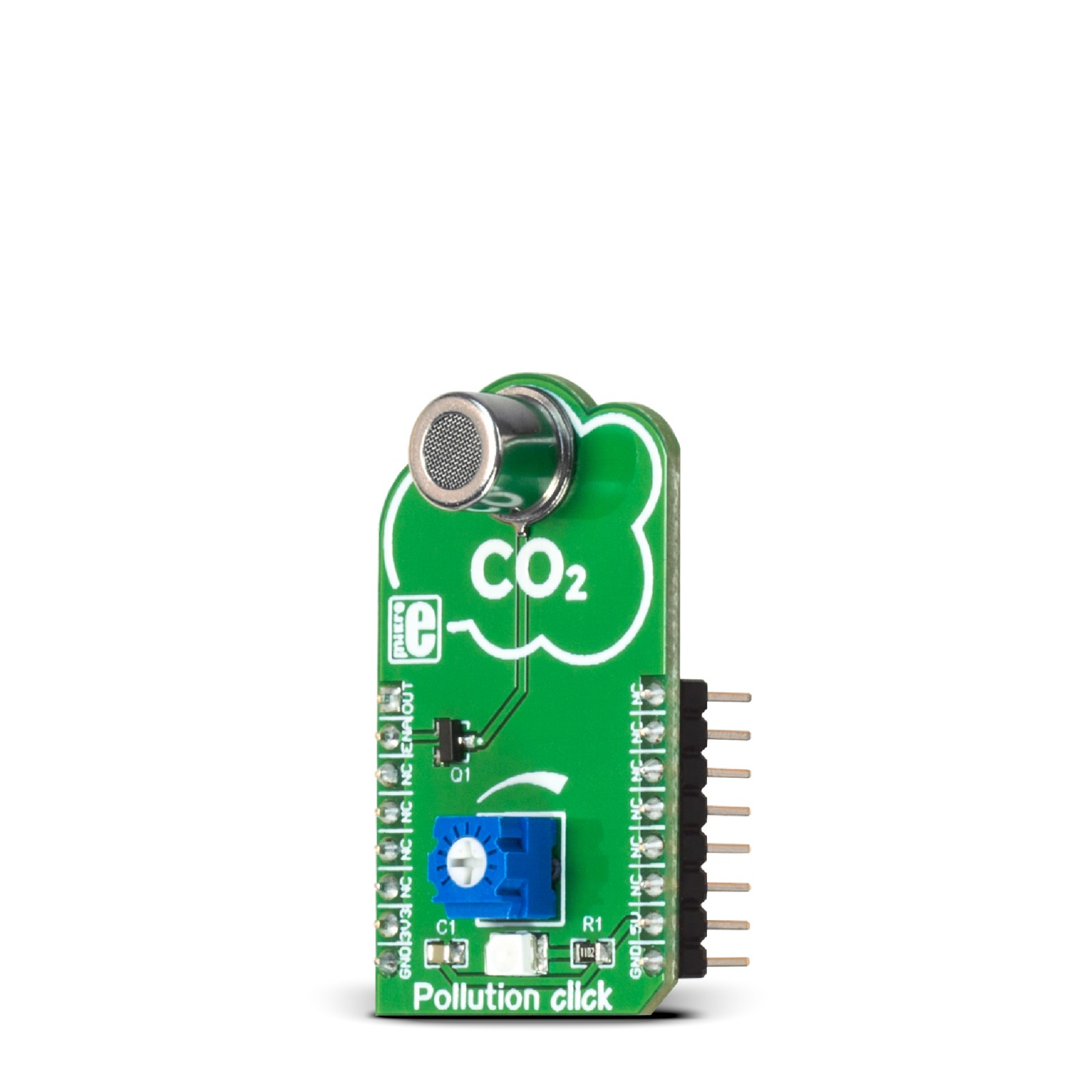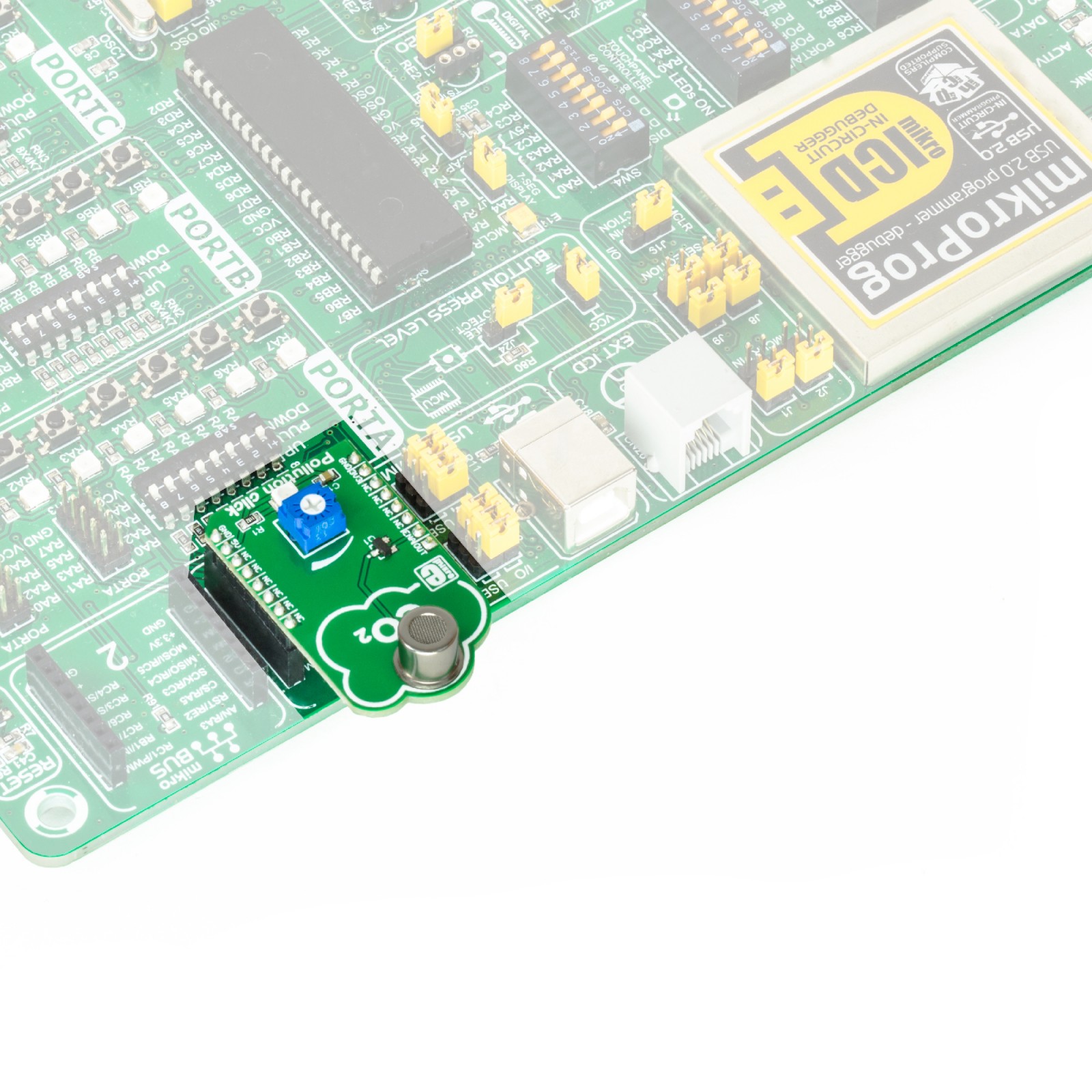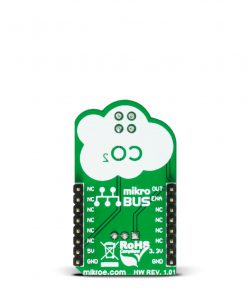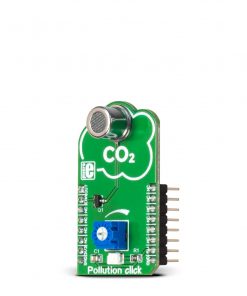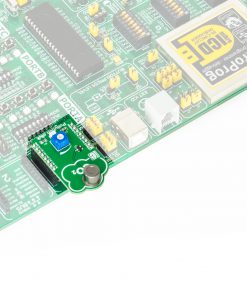Pollution Click
R1,050.00 ex. VAT
Pollution Click is a compact add-on board that can detect the presence of organic gases. This board features the WSP2110, a VOC gas sensor from Winsen. The sensitive material of the WSP2110 is Al2O3, which reacts with lower conductivity in clean air. When target pollution gas exists, the sensor’s conductivity increases alongside the gas concentration. It is characterized by a high sensitivity to such as methanal (also known as formaldehyde), benzene, alcohol, toluene, and more, but also with an extended lifespan providing a corresponding output signal of gas concentration from 1-50ppm through the analog mikroBUS™ line. This Click board™ makes the perfect solution for the development of domestic and industrial gas alarms and portable gas detectors.
Pollution Click is supported by a mikroSDK compliant library, which includes functions that simplify software development. This Click board™ comes as a fully tested product, ready to be used on a system equipped with the mikroBUS™ socket.
Stock: Lead-time applicable.
| 5+ | R997.50 |
| 10+ | R945.00 |
| 15+ | R892.50 |
| 20+ | R858.90 |

